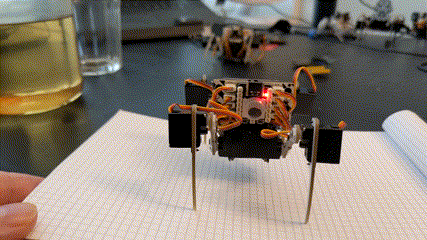I had some time for coding at the hackerspace this week, so I wrote simple code for balancing to test the accelerometer. It goes something like this:
import robot
import time
import lis3dh
import busio
import board
i2c = busio.I2C(sda=board.D4, scl=board.D5, frequency=600000)
accel = lis3dh.LIS3DH(i2c)
height=20
tilt = 0
while True:
x, y, z = accel.get()
if x > 500:
tilt = min(tilt + 20, tilt + 1)
if x < -500:
tilt = max(tilt - 20, tilt - 1)
for leg in robot.LEGS:
if leg.left:
leg.move(0, height - tilt)
else:
leg.move(0, height + tilt)
time.sleep(0.05)Even for simple code like this, the effect is pretty cool:

Of course to make it useful, it has to also work in the other axis, and be integrated with the walking algorithm and others. I have some ideas about how to do it, though, so stay tuned.
 deʃhipu
deʃhipu
Discussions
Become a Hackaday.io Member
Create an account to leave a comment. Already have an account? Log In.